Attracting and keeping your ideal audience can be a difficult proposition. Buyers have become increasingly sophisticated, with higher expectations of the brands that they buy from.
With more customers opting to conduct in-depth research before making a purchase, they’re bound to come into contact with a lot of content—71% of B2B buyers engage with content during the purchasing process. Inundated with marketing noise, they have to pick and choose which pieces of content to devote their time to and use as guiding references in their decision to buy.
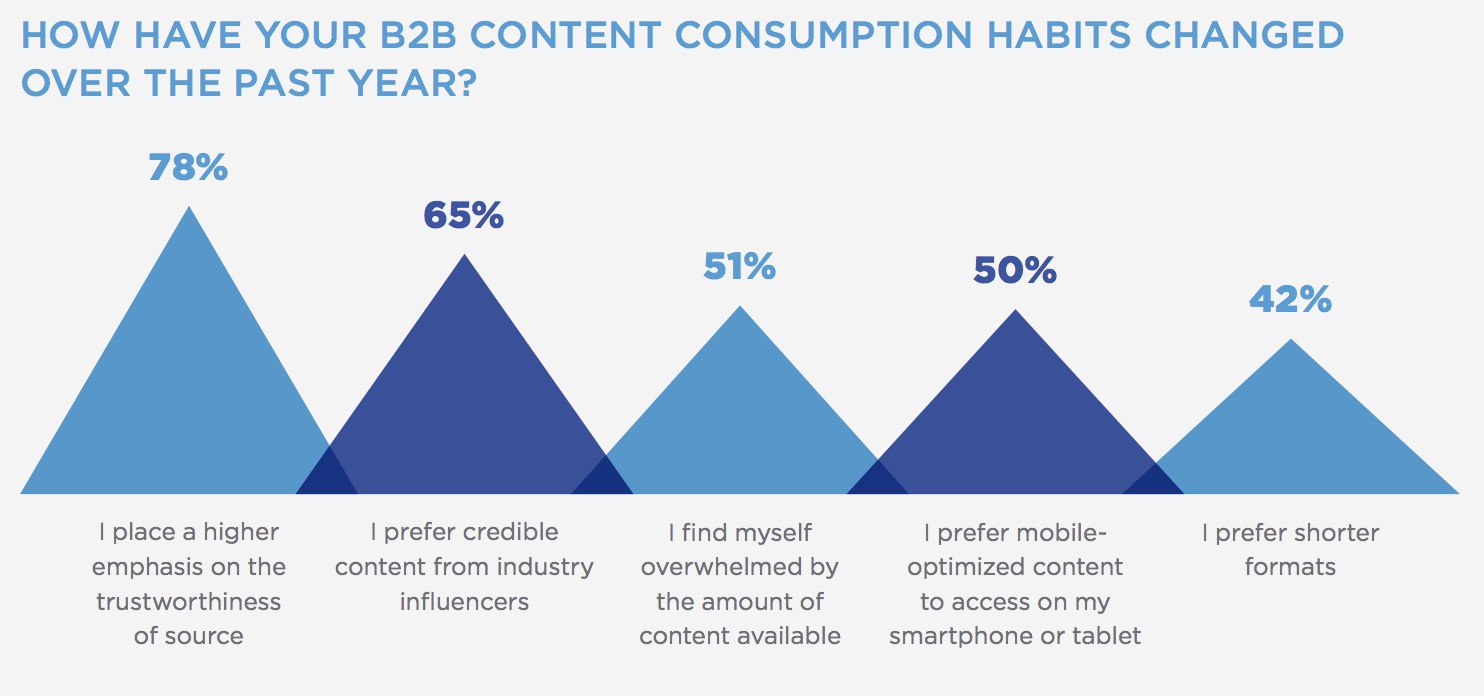
Source: Demand Gen Report
Just how hard is it to keep the attention of B2B buyers?
- According to a study by Influence & Co., readers view a resource that they engage with for an average of two minutes and two seconds. They also only consume about 53% of the average content offer.
- According to a study from Marketing Insider Group, content requests among C-level execs is growing at a clip of 11% per year.
- 78% of buyers place more emphasis on the trustworthiness of a source. Credibility matters and if your visitors don’t have faith that your brand is credible, they’ll disregard your content.
- 47% of buyers consume between three and five pieces of content before they ever talk to a sales rep. They handle much of the initial research on their own before they want to take the next step.
- 57% of consumers say that watching videos makes them more confident in their purchasing decisions.
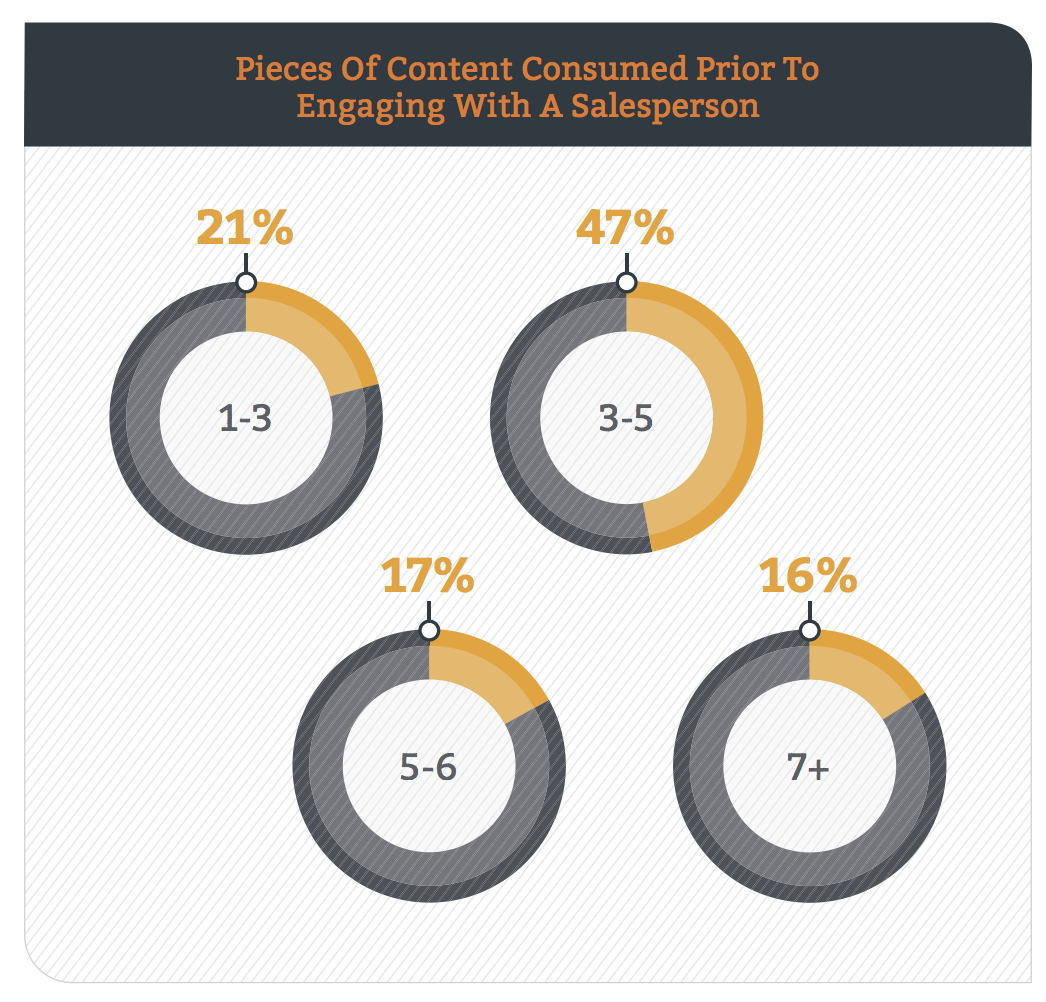
Source: Demand Gen Report
The way B2B buyers engage with and integrate content into their research processes is changing. With this growth in demand comes a growth in competition. Brands have to do more to stand out and grab the attention of B2B buyers.
One of the best ways to do this is to supplement your content operation with the production of rich media, either as a complement to other content formats or as a standalone piece of content. To understand how rich media can help, we first have to define what rich media is as it pertains to content operations.
What Is Rich Media and Why Has it Become so Popular?
You’ve probably heard of rich media primarily talked about in the context of paid advertising. This is where the term is most commonly used, but I’d argue that rich media has its place in content operations as well, as a supplement to more traditional forms of static content.
Wikipedia defines rich media as “a broad range of interactive digital media that exhibit dynamic motion, taking advantage of enhanced sensory features such as video, audio, and animation.”
Different types of rich media content might include:
- Videos
- GIFs
- Instagram stories
- Podcasts
- Content narration audio
- Infographics
- Live streams and topical webinars
Rich media has become increasingly popular in digital advertising over the last decade. There are a few reasons for this. To start, the inclusion of rich media on web pages has become easier as browsers and websites have integrated HTML5, which allows for easier placement and loading of rich media elements. But that alone didn’t drive the interest in rich media advertising—the results did.
A 2013 report from Opera Mediaworks shows just how much of a difference rich media can make in an advertising campaign. Their study found that rich media ads achieved a click-through rate of 1.53% in apps and 1.12% on the web. Standard static banner ads only achieved click-through rates of 0.39% and 0.32% respectively.
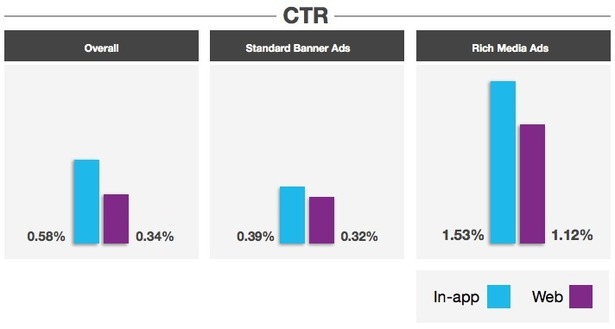
Source: eConsultancy
These same benefits can be achieved in content campaigns as well as ads. Supplementing a blog post with a video, for instance, not only makes the post more valuable but also allows you to connect with visitors who would prefer to consume the content through the video medium. It arms your marketing teams with content that can be shared on new platforms, improving your SEO efforts and giving potential prospects new ways of finding your company.
Let’s dive into some of the benefits that rich media can bring to your content operation:
What Are the Benefits of Rich Media in Content?
Injecting rich media into your content campaigns can help you improve engagement and user experience and help to drive improvements in several key content metrics.
1. Grab The Attention of New Audiences
Rich media helps you to present content in a way that helps visual learners to retain more information. Visual learners absorb and recall information best by seeing, and these folks make up about 65% of the population. If a visitor is presented with the same content delivered in both a blog post format and video, a healthy percentage of people will choose the video. Without that complementary content, you might have a hard time keeping eyes on your content.
Additionally, spreading your content across rich media like podcasts and infographics broadens your reach and increases your brand awareness.
2. Stand Out from the Competition
Take a look around your industry. How many of your competitors are supplementing the content that they publish with rich media? Chances are, there are very few, if any, that have made it a central part of their content marketing strategy. Rich media provides a perfect way to increase the value of the content that you publish and to catch the eyes of your prospects by standing out from the competition.
3. Increased Engagement Rates
Rich media content and ads increase engagement with visitors. Rich media content gets users engaged on the page and helps them to better understand the topics that you are discussing. Then, when it comes time to call the visitor to action, they’re more likely to make that click.
In a 2014 study by Adform, they examined how rich media performed when compared to standard digital ad displays. The results were promising. Adform found that ads that used rich media saw engagement rates of 16.85%, compared to just 2.14% for banner ads and 1.62% for mobile.
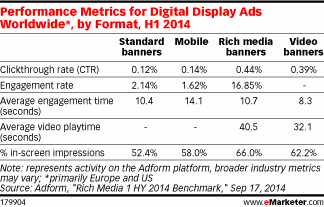
The study went even further, breaking down key performance metrics for rich media display ads by industry. While all industries showed higher levels of engagement than traditional banner ads, some industries benefitted more than others.
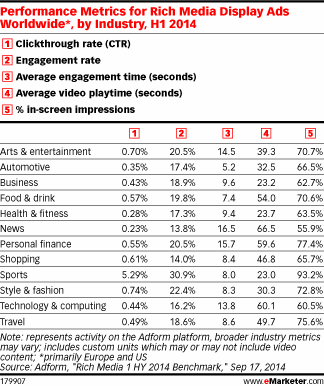
4. Lower Bounce Rates
Video and other rich media elements keep visitors from bouncing by holding their attention and increasing the chances that they stick around to engage with the page. A case study from the content marketing agency Brafton detailed how supplemental one-minute videos helped a client achieve 34% lower bounce rates than the rest of their website on average.
They also created short informational videos featuring tips and answers to frequently asked questions for their visitors, typically focused around the subject of the blog post. At the end of the video, viewers were given a clear CTA. Along with the lower bounce rate, the company also saw improved time on page. With a solid video offering, enticed visitors to stick around and check out the rest of the content on the page.
5. Accelerate Customer Journey
Rich media content lends itself extremely well to the process of nurturing prospects through your sales pipeline. By mapping the content to certain points in the customer journey, you arm your sales reps with powerful sales enablement content.
6. Build a Better User Experience
Rich media simply provides a more interesting experience to users. This is especially true for those engaging with you via mobile, who may be less likely to read a long-form blog post to watch a video or listen to a podcast.
7. Develop Deeper Insights
Tracking how long audiences and customers watched your video or listened to your podcast, which parts of the video they watched multiple times, and what imagery facilitated the most engagement from your visitors are all useful metrics that provide new data points for optimization. Creating and tracking this kind of content opens up new insights to your organization that you can use to inform other marketing efforts.
8. Increase Search Reach
Rich media makes your content relevant to more platforms and expands sharing opportunities. Videos can be posted to YouTube, Vimeo, and other platforms. Podcasts can be shared on iTunes and archived by podcast search apps on any mobile device. For companies, this means more opportunities to secure backlinks and connect with new audiences on platforms they otherwise wouldn’t reach with standard text and static content.
A More Engaging Offering
Rich media is a powerful tool in the hands of an expert content marketer. It can serve as a high-value piece of standalone content or a complementary piece of content attached to a larger offering, providing a more engaging format for prospects, some of whom may prefer to consume content through video or audio formats, rather than through a traditional blog post, white paper, or eBook.
Rich media can help you improve key engagement metrics and build awareness and standing in the eyes of prospects. The best part? Even small investments can have a profound impact.

